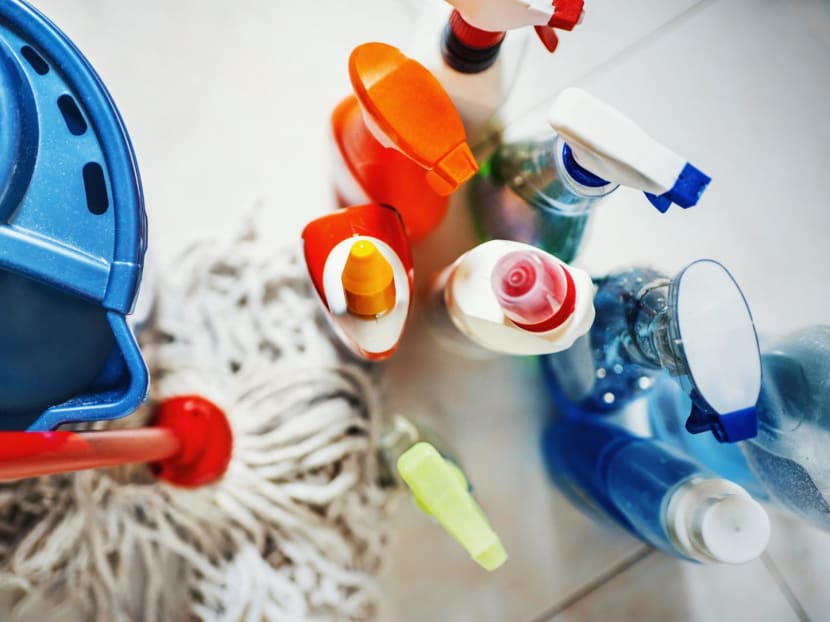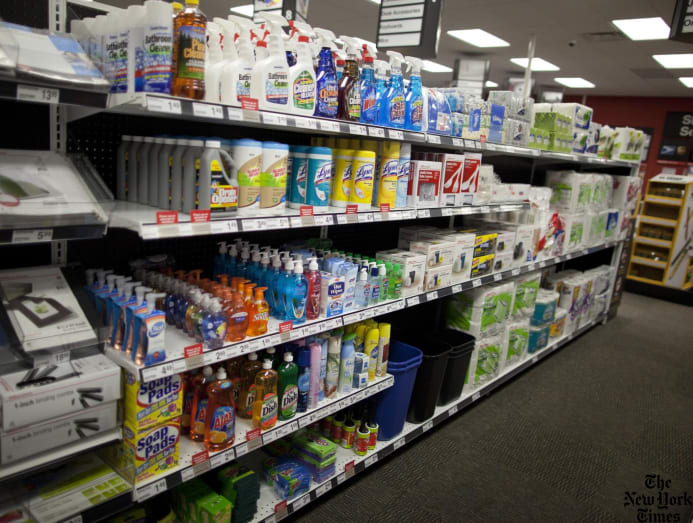Common consumer products contain multiple toxic chemicals, new study shows
Hair and nail products, all-purpose cleaners and automotive products contain some of the highest numbers of chemicals.

Cleaning products. (Photo: iStock/gilaxia)
More than 100 types of common consumer products contain at least one, and often multiple, chemicals linked to cancer or reproductive and developmental problems, according to research published on May 2 in the journal Environmental Science & Technology.
Many of the chemicals were found in personal care products, including nail polish, shampoo, lotion and soap. Cleaning products, particularly all-purpose cleaners, laundry detergent and dish soap, also contained numerous chemicals. The largest group of products were those that might be used in workplace settings, such as factories or construction sites, and included adhesives, degreasers, lubricants and sealants.
To compile the list of potentially hazardous products, researchers from the Silent Spring Institute and the University of California, Berkeley, cross-referenced two databases maintained by the state of California. The first was the California Air Resources Board’s list of products sold in the state that release volatile organic compounds, or VOCs, which are chemicals that easily transform into gas and are released into the air.
The second was a list of chemicals flagged as being carcinogens or reproductive and developmental toxicants by Proposition 65, California’s Safe Drinking Water and Toxic Enforcement Act.

Comparing the two databases, the researchers found 33 V.O.C.s that were identified by Prop 65 as being hazardous to health. The chemicals were listed as ingredients in 105 different consumer product categories.
“The thing that jumped out to us was just really the extent of the exposures,” said Kristin Knox, a staff scientist at the Silent Spring Institute who led the research. “People can be exposed to the same chemical in a whole bunch of different products.” Some products also contain many different chemicals.
Kurunthachalam Kannan, a research professor at NYU Langone Health who studies human exposure to toxic substances and was not involved in the study, said the results didn’t surprise him. “These volatile organic compounds are there in almost every product that we use: The consumer products, personal care products, cosmetics,” he said.
The researchers also identified 11 of the chemicals and 30 of the product categories “as immediate targets for regulatory restriction or manufacturer redesign.” About two-thirds of the products were personal care or cleaning products people used at home. Many of them were also used by professional cleaners, auto mechanics, construction workers or employees in hair and nail salons, who are potentially exposed to higher levels of the chemicals than the average consumer.
Workers often have very little power “to control the products that they use in the workplace and what they’re exposed to,” said Dr. Megan Schwarzman, a physician and environmental health scientist at the UC Berkeley School of Public Health, and a co-author of the paper. As a result, she said, regulatory action is needed to protect employees from these chemicals.
According to the researchers, one of the most concerning chemicals identified was diethanolamine, or DEA, which is classified as a possible carcinogen by the International Agency for Research on Cancer and is banned from use in cosmetics in Canada and the European Union. DEA was listed as an ingredient in 40 items, including soaps, lotions, hair products and household cleaners.

The preservative formaldehyde was also at the top of the list. It is a known carcinogen, is also prohibited in cosmetics in the European Union and was found in 17 product categories. Formaldehyde has been the focus of several studies evaluating the air quality of nail salons. (While many consumer products are not required to list their ingredients, personal care products must, so diethanolamine and formaldehyde will both appear on those labels.)
The fact that these chemicals are released into the air makes them especially concerning, Dr. Knox said. “If you’re using a product that has a lot of VOCs in it, it’s not just that you might be smearing that product on your body, but also it’s being released into the air.” As a result, she said, other people in your home, like young children, can be exposed even if they’re not using the product.
Children and pregnant women are especially vulnerable to these chemicals. “During the intrauterine time period, the developing organism is far more sensitive to the effect of chemical exposure than we are as adults,” Dr Schwarzman said. “So the same level of, say, solvent exposure causes very different effects when that exposure occurs prenatally than when it does as an adult.”
One way to limit exposure to some of these chemicals, the researchers said, is to choose home and personal care products that are fragrance free. Fragrances are a common source of VOCs because the scent has to be released into the air in order for us to smell it. The researchers also recommended using these products with as much ventilation as possible.
An unanswered question is at what level of exposure do health problems start to emerge. In small, infrequent doses, the risk from most of these chemicals is likely low. However, Dr. Kannan said, for chemicals found in commonly used products, even small amounts of exposure can build up over time.
“What are the effects that you see when the product is used on a daily basis, for example, 70 years continuously?” he said. During that time, “you are exposed to hundreds, if not thousands, of these kinds of chemicals.”
By Dana G Smith © The New York Times Company
The article originally appeared in The New York Times.






